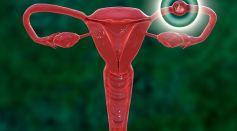NANOTECHNOLOGY

'Extended Landau Free Energy Model': New Physical Theory For Advanced Materials Creates Effective Visualization of Optimal Structure For Nanodevices

New Nanoparticles Designed for Cancer Chemotherapy and Immunotherapy

This Microrobotic Finger Can Now Help You Tickle a Bug!

Researchers Make 3D Flower With Interactive Chirality Selection [LOOK]

Therapeutic Nucleic Acids: How Nanoparticles Can Be Engineered To Revolutionize Treatments

Novel Kind of Nanoparticle Can Support Identifying An Ectopic Pregnancy [Study]

Growing Nanotubes Could Guide a 'Holy Grail' of Raising Batches in Single Chirality

Finely Dispersed Nanocrystals Can Store Light Energy and Conduct Chemical Reactions

Nanotechnology Can Now Help Cancer Patients Cure Sickness By Sending 'Eat Me' Signals!

New Magnetic Material Emulates Synapses of Neuron, Mimics How Information is Stored in the Brain

Ingenious Solution of Changing the Temperature of the Solvent Separated Bonded Nano-Components

Targeting Enzymes May Help Nanosensors Check Cancer

Nanoparticles Advance Nanomedicine to Cure Incurable Conditions, Develop Personalized Biomedical Technologies
Nanomedicine Enhanced: Scientists Use Nanoparticles to Potentially Cure Currently Untreatable Conditions Like Dementia
Most Popular

Largest Known Volcanic Aquifer Discovered Beneath Oregon's Cascades

New 'Supergiant' Sea Bug Found in South China Sea, Named After Darth Vader

Mediterranean Sea Was Refilled by a Catastrophic Flood Millions of Years Ago

Mysterious Cosmic Waves That Sound Like Birds Detected in Unexpected Space Region





